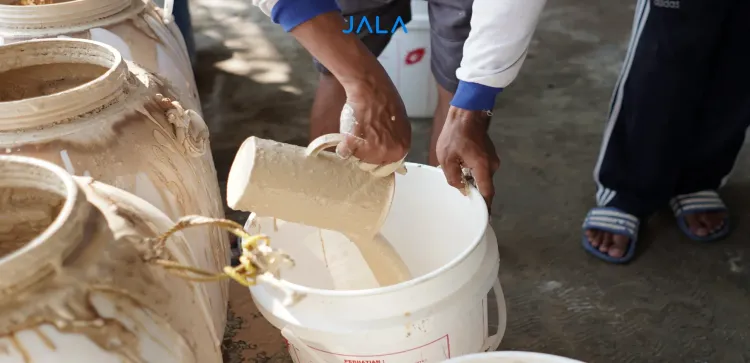
In shrimp farming, feed is one of the most crucial components as it supports shrimp growth. Semi-intensive, intensive, and super-intensive ponds mostly rely on synthetic feeds. At the same time, feed cost represents a significant portion of the overall cultivation cycle cost, accounting for approximately 50-70% of the total expenses.
Feed cost is a concern for shrimp farmers, especially with the current increase in shrimp feed prices due to the rise in cost of feed ingredients such as fish meal. What can shrimp farmers do in the midst of the rise in feed prices?
Improve feed efficiency
Feed efficiency can be improved when feed is not wasted, and the consumed feed is utilized to the fullest for shrimp growth. Therefore, feed input should be adjusted based on the shrimp's feeding capacity and the pond system’s ability to circulate by-products from feed and shrimp metabolism. Feed should be distributed evenly throughout the day to prevent accumulation at a single time.
To maintain efficiency, pay attention to the timing and frequency of feed distribution. Adjust the feeding intervals so that shrimp can digest their food properly. Shrimp take 48-90 minutes to digest their food, and it takes 4-6 hours for the food to pass through the digestive system as feces.
The use of tools like feeding trays is essential for farmers to maintain feed efficiency and prevent overfeeding. Do regular checking of shrimp appetite through feeding trays everyday after each feeding. In addition to monitoring shrimp appetite, feeding trays assist farmers in regular shrimp health checks and evaluating fluctuations in water quality. This is important because changes in shrimp appetite can be influenced by water quality or weather conditions at the time.
Read more: Daily Feed Input Keeps Increasing, yet Shrimp Are Not Growing
The Feed Conversion Ratio (FCR) is a key indicator of efficient feed utilization. The ideal FCR ranges from 1.1 to 1.2 and is calculated by dividing the amount of feed used during cultivation or sampling by the biomass or weight of shrimp at the end of cultivation or during sampling.
Digitize your shrimp feed management with JALA App
JALA App is #HeretoHelp farmers for easier monitoring of shrimp feed usage and farm conditions anytime and anywhere. Feed data can be input into the JALA App, providing calculations of the amount of feed used and estimating feed for the next day. This helps farmers avoid overfeeding. Additionally, farmers can view predictions of shrimp count and growth in the pond, monitor water quality, and make quick and informed decisions for their cultivation.
Don’t compromise feed quality, keep providing the best feed for your shrimp
Amidst the surge in feed prices, farmers may be tempted to switch to cheaper feeds in order to maintain their budgets. However, farmers must prioritize the growth and health of shrimp, which is only achievable with high-quality feed.
Shrimp feed quality can be assessed firstly by its physical characteristics. Physically, feed should have uniform color and size, a smooth surface, be dry, clean, and does not clump together. Uniformly sized feed is easier for shrimp to consume. Additionally, feed with an attractive appearance and aroma will be more preferable for shrimp.
Nutritional content is also a determinant of feed quality. Protein is the primary source of nutrition for shrimp and is often used as a reference in feed selection. Feed with 30-35% protein is considered sufficient for shrimp metabolism and growth. While using feed with lower protein content may reduce costs, shrimp growth will not be at its optimum rate, and the feed may even be uneaten and end up wasted. Feed with too much protein content poses risks to water quality due to increased levels of ammonia, nitrites, and nitrates.
High quality feed ensures healthy shrimp growth. Therefore, feed distribution needs to be balanced with good feed management for maximum cultivation results.
To deal with the rise in feed prices, farmers need to focus on efficiency. Additionally, reevaluate feeding programs to ensure growth targets are met without compromising water quality. Lastly, do not compromise on quality to reduce costs. Keep providing the best nutrition for shrimp to ensure a productive and sustainable shrimp cultivation.





